DuckChain aims to bring billions of Telegram users from off-chain to on-chain, enabling seamless compatibility between TON and ecosystems like EVM and BTC.
Written by: Deep Tide TechFlow
The crypto market is experiencing an unprecedented "zoo" cycle, with a variety of animal-themed projects emerging one after another.
In the gaming sector, the battle between cats (Catizen) and mice (Hamster) leads the trend of earning points;
In the meme market, hippos, squirrels, spider monkeys, and eagles take turns, repeatedly pushing this speculative and absurdly comedic track to new heights;
In the public chain ecosystem, this year, besides community-culture-driven projects like Monad and Berachain, the most anticipated is the consumer Layer DuckChain, supported by the magic of TON + Arbitrum.
On November 18, DuckChain announced the official launch of its mainnet, along with the innovative ISO concept, allowing users to convert Telegram Stars into on-chain Stars and participate in on-chain interactions, further lowering the cognitive and participation barriers for users. Within less than a week of its launch, DuckChain achieved the impressive milestone of "over 1 million active wallets recharging Stars," with on-chain transaction volume exceeding 5 million by the time of this article.
On this important milestone, we had the privilege of engaging in an in-depth conversation with DuckChain founder Ducking.
In the current competition among public chains, finding the right track and doing good development are equally important. For those who are new to DuckChain, it seems that this project carries many labels at first glance: the first EVM-compatible consumer Layer in the TON ecosystem, support from Arbitrum, over 1 million paid users on the testnet, and total users exceeding 10 million…
Although it may seem dazzling, Ducking, who has rich investment analysis and quantitative experience, is very adept at summarizing the essence of the issue in simple terms:
As the first consumer Layer to provide developers with an EVM development environment on TON, DuckChain aims to bring billions of Telegram users from off-chain to on-chain, enabling seamless compatibility between TON and ecosystems like EVM and BTC.
When discussing "what kind of applications are more likely to gain DuckChain's favor," Ducking candidly stated:
DuckChain will prioritize supporting applications with the potential to break into new markets, truly bringing Web2 users into Web3 and providing users with diverse application scenarios and seamless interaction experiences. Specific types include, but are not limited to, Meme, GameFi, SocialFi, and innovative DeFi projects.
In this issue, let us follow Ducking's insights and delve into the unique "consumer Layer" of DuckChain, as well as the community culture led by this little yellow duck wearing sunglasses, which boasts a user base in the millions.
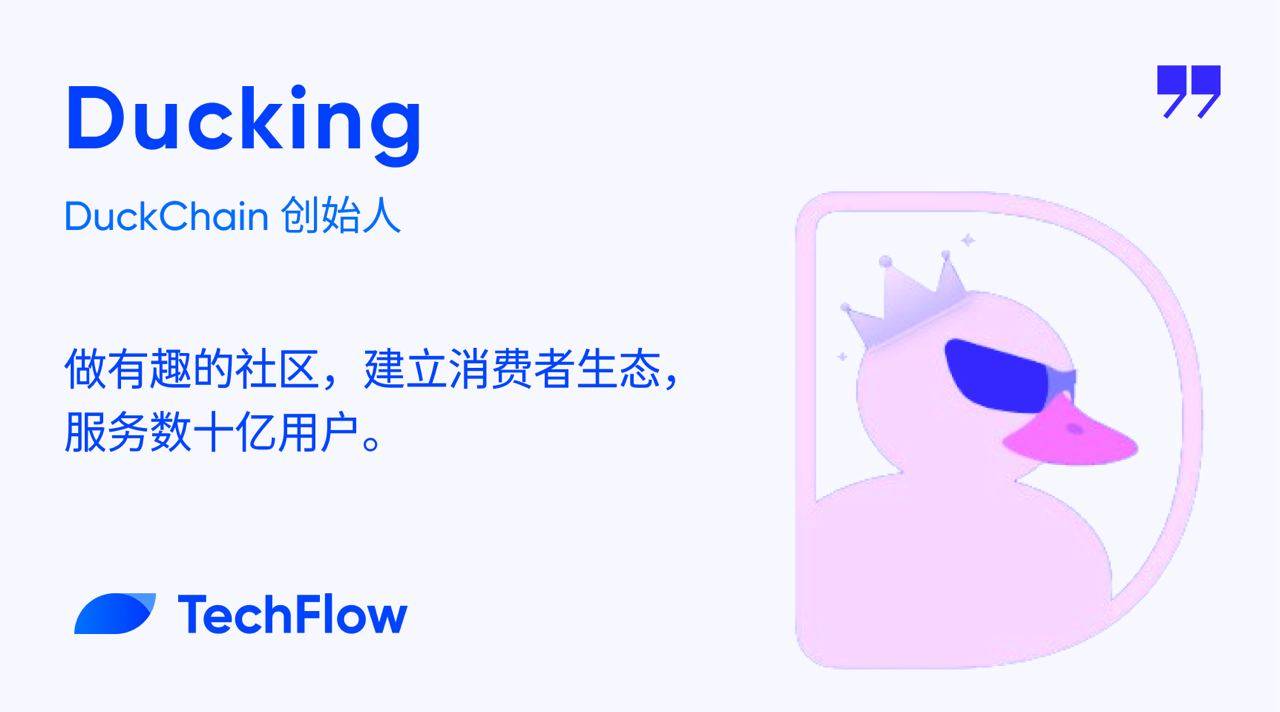
Entering the founder Ducking: Firmly believing that TG is the traffic entrance for Web3 mass adoption
TechFlow: It’s a pleasure to have the opportunity for an in-depth exchange with you. First, please introduce yourself (you can share some of your past educational experiences, your career/entrepreneurial journey in Crypto, and the circumstances that led to the founding of DuckChain).
Ducking:
Hello everyone, I am DuckChain founder Ducking, and I am very glad to have this opportunity for an in-depth exchange.
I went all in on the crypto industry in 2019. Before that, I worked in investment analysis and quantitative roles at a Web2 investment firm, and I studied for a master's degree in business at Cambridge University. After learning about crypto, I made the decision to drop out.
In the crypto field, my experience mainly spans from exchanges to VC and then to quantitative funds. In 2021, I established a studio focused on innovative research and development of crypto products, providing product support for many projects that launched on Binance and Coinbase.
Last September, I began to pay attention to the TON and Telegram ecosystem. At that time, the market was not very optimistic, but I firmly believed that Telegram would be the next direction for Web3 mass adoption. It was during this time that our team planned to develop some innovative products on TON. In the process, we found that the underlying architecture of TON was very unfriendly to developers, and many developers needed to spend months just to grasp the basics, which sparked my idea to improve the developer environment on TON.
In April of this year, the Tap to Earn Game became popular on TON, and we initially felt the enormous traffic benefits of Telegram, a level of traffic that had not been seen in the nearly ten years of crypto development. This further confirmed the significance of Telegram as a traffic entrance for this ecosystem.
However, with the emergence of some hot projects, people also discovered the shortcomings of the underlying technical infrastructure of the TON chain, as well as issues like the lack of an active developer ecosystem. Ultimately, this is because the FunC language of TON is unfamiliar to 99% of developers.
Therefore, if TON wants to enter the next stage, the core issue should be to attract more excellent developers. This led us to the idea of bringing the EVM development environment and developers into the TON ecosystem. If developers can use Solidity to develop on TON, we believe this will usher in the next wave for TON.
TG's billion-user reserve + EVM's strong infrastructure + comprehensive liquidity integration = DuckChain
TechFlow: In the eyes of many, DuckChain gathers many impressive labels, such as the first consumer Layer in the TON ecosystem, the first EVM-compatible L2 in the TON ecosystem, and the first non-EVM Layer supported by Arbitrum, etc. If you could only introduce DuckChain in one sentence, how would you do it?
Ducking:
As the first consumer Layer to provide developers with an EVM development environment on TON, DuckChain aims to bring billions of Telegram users from off-chain to on-chain, enabling seamless compatibility between TON and ecosystems like EVM and BTC.
TechFlow: In the current landscape where the barriers to launching chains are getting lower, the competitive landscape of numerous projects makes people more concerned about what specific pain points this chain addresses. As the first consumer Layer in the TON ecosystem, how was this unique market positioning determined? In the ongoing discussions about consumer applications in the community, what kind of consumer Layer does DuckChain aim to build?
Ducking:
The core issues we want to address can be summarized in three points:
Allow developers to seamlessly enter Telegram and TON to develop consumer products.
Through abstract accounts and chain abstraction features, make it easier for Telegram users to go on-chain, reducing the user's understanding of the chain and lowering the barriers for users to enter Web3.
Provide Telegram users with a richer array of consumer products.
Therefore, it is very clear that DuckChain is born for consumers. We position ourselves as the next-generation Web3 consumer super platform for billions of Telegram users. We hope to allow Telegram users to experience a wealth of consumer applications, from GameFi and SocialFi to various application-level products.
Correspondingly, our infrastructure is prepared for consumers: for developers, we hope they can more easily build consumer applications on our chain; for consumers, we hope they can seamlessly experience various consumer products on our chain, reducing the complexity of Web3 concepts.
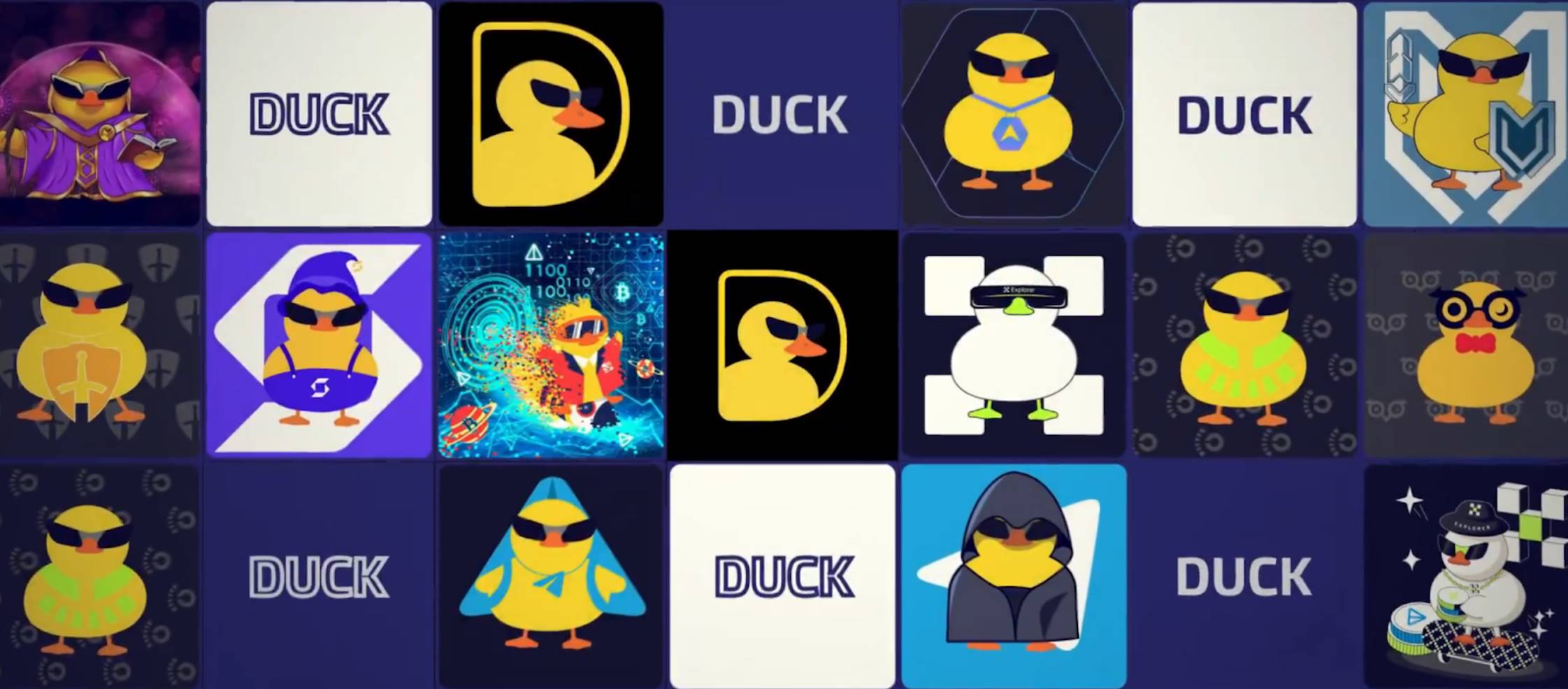
TechFlow: Why did DuckChain choose TON? Do you believe that only TON can further promote DuckChain's vision of a consumer Layer?
Ducking:
TON is the only ecosystem that possesses both a solid technical foundation and a vast user reserve. Its integration with Telegram has far greater potential than other public chains, allowing us to directly reach billions of users and rapidly advance the vision of a consumer Layer.
Therefore, although other chains have their characteristics, TON's unique positioning aligns best with DuckChain's mission.
At the same time, despite the current vibrancy of the TON ecosystem, its development is still in the early stages, and the vast majority of Telegram users have not yet participated in the TON ecosystem, which presents DuckChain with significant opportunities and growth potential.
TechFlow: It is undeniable that the TON ecosystem is one of the best-performing blockchain ecosystems this year, but it is equally important to note that the TON ecosystem also faces challenges such as complex development, high user thresholds, and isolated liquidity. In the face of these challenges, how will DuckChain leverage its advantages and address its disadvantages to advance its vision for a consumer Layer?
Ducking:
On one hand, DuckChain lowers the barriers for developers by introducing the EVM development environment; on the other hand, we significantly reduce the difficulty of using the chain for users through chain abstraction technology.
In addition, I believe DuckChain's most unique advantage lies in how we present the complex Web3 token concepts to users in the form of DuckChain Stars, allowing users to easily understand that DuckChain Stars are similar to Telegram Stars, or functional points currency like Q coins, thereby greatly reducing the initial learning cost for users regarding new concepts.
In terms of liquidity, DuckChain is committed to integrating the liquidity of the EVM and BTC ecosystems into TON, addressing isolation issues and providing users with a seamless Web3 experience.
TechFlow: We have noticed that there are many technology stacks for one-click chain launching. DuckChain chose to build on the Arbitrum Orbit technology architecture, bringing an EVM development framework to the TON ecosystem. What considerations led to this choice? What does this mean for developers? How will the collaboration empower the development of both ecosystems to achieve a win-win situation?
Ducking:
As the popularity of the TON ecosystem rises, many EVM developers are eager to explore the TON ecosystem, but the unfamiliar development environment has become a barrier that deters them.
Arbitrum Orbit provides DuckChain with a highly optimized Rollup architecture and extensive developer support, ensuring that DuckChain's EVM environment is stable and efficient.
Through DuckChain, EVM developers can leverage their existing development experience to quickly develop on TON while enjoying the efficient technical support provided by Arbitrum. This will significantly reduce development costs, shorten development cycles, and allow them to benefit from the substantial traffic bonuses from DuckChain and the TON ecosystem.
The partnership between DuckChain and Arbitrum will not only bring a new user base from TON to Arbitrum but also enhance DuckChain's performance through its technology, attracting more developers and jointly expanding the ecological influence.
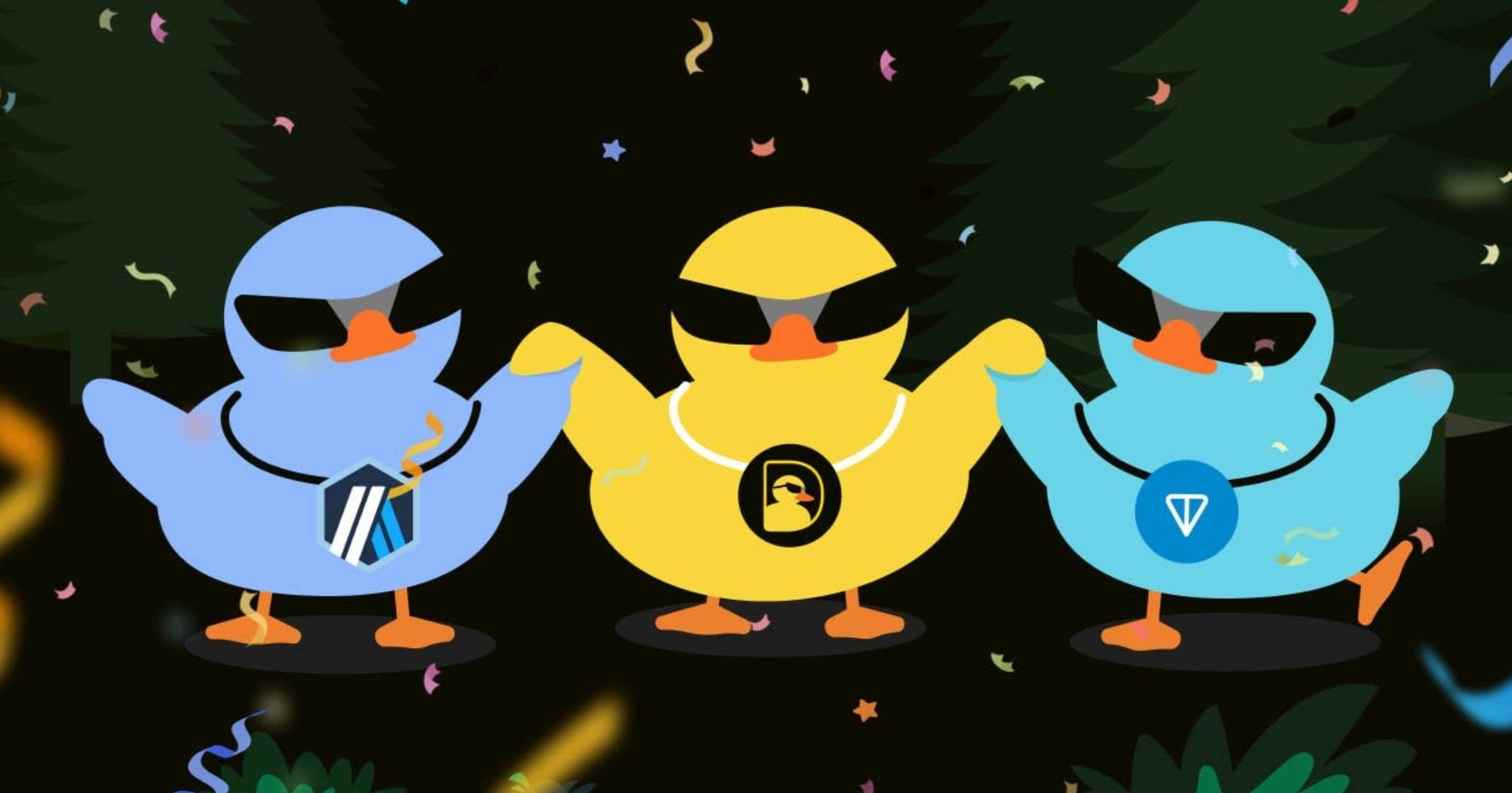
TechFlow: Breaking the isolation of liquidity in the TON ecosystem and further integrating the liquidity of the EVM ecosystem and even the Bitcoin ecosystem is another major issue DuckChain is dedicated to solving. In this cycle, where the problem of liquidity fragmentation has become increasingly prominent, how is DuckChain addressing this?
Ducking:
By building cross-chain bridges and unified liquidity pools, DuckChain helps users achieve the free flow of assets between TON, EVM, and BTC.
At the same time, we have introduced liquidity incentive mechanisms to attract users and some well-known project parties (such as PumpBTC, BedRock, Lorenzo, etc.) to inject funds into the ecosystem, fundamentally enhancing liquidity integration.
TechFlow: Recently, DuckChain has been very active, announcing collaborations with projects like Nubit, Particle Network, and Tomo Wallet. We know that ecosystem building is a crucial part of project development, and the increasingly完善的生态版图 will provide users with a better participation experience. Therefore, could you guide us through the DuckChain ecosystem and help readers gain a deeper understanding of its landscape?
Ducking:
DuckChain focuses on developer support, consumer applications, and ecosystem collaboration, aiming to create an innovative and practical Web3 platform.
By providing an EVM development environment, DuckChain significantly lowers the barriers for developers while offering traffic support, professional guidance, and ecosystem funding to help developers quickly realize their projects and achieve success.
In terms of consumer applications, DuckChain focuses on popular areas such as Meme, GameFi, SocialFi, and DeFi, providing users with diverse application scenarios and seamless interaction experiences.
Additionally, DuckChain continues to strengthen ecosystem collaboration, partnering with many well-known partners to jointly build key infrastructures such as decentralized exchanges, lending protocols, launch platforms, and oracles, creating a more solid ecological support for developers and users.
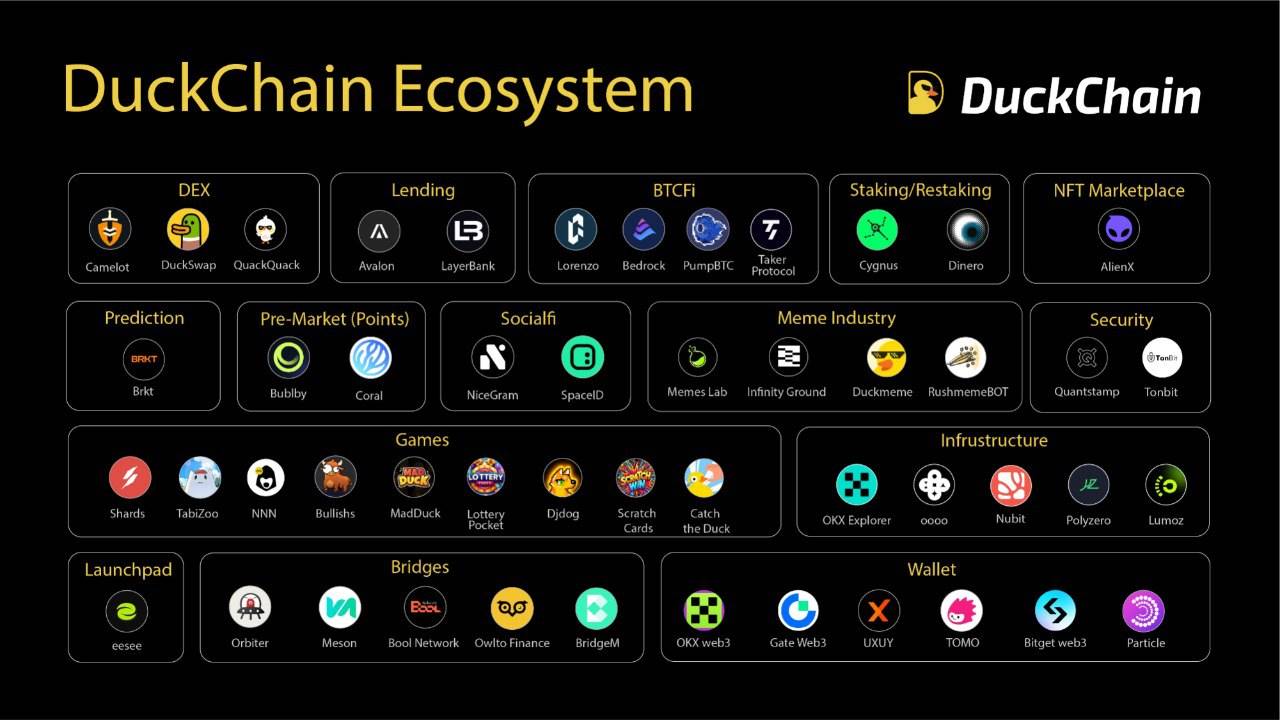
Reaching a Million Users: Escaping the Mundane, Community Participation Can Be Fun
TechFlow: As an important channel for users to interact with Duck Planet, DuckChainBot has been well-received by the community since its launch due to its fun and unknown gameplay. Many community members even believe that the product design of DuckChainBot largely reflects DuckChain's community building philosophy. What is your view on this perspective? What kind of construction philosophy will DuckChain practice in terms of community culture?
Ducking:
The gameplay of DuckChainBot indeed fully embodies our "community-centric" operational philosophy.
In terms of design style, DuckChainBot distinguishes itself from most "serious" public chains by engaging users with a fun and cute duck image, achieving very good results.
Moreover, we actively build partnerships with other well-known projects, providing users with rewards from our partner projects through various fun activities, which is also a concrete manifestation of our high regard for community demands.
Under this operational philosophy, DuckChain has gradually created a community culture characterized by fun, innovation, and openness, continuously encouraging users to enter the Web3 world in a relaxed and enjoyable way, ultimately forming the currently highly active ecosystem.
TechFlow: According to previous data, DuckChain's testnet has surpassed 1 million paid users, with daily active users of Miniapp exceeding 2 million, and total users exceeding 10 million. In a time when most users are fatigued from completing tasks and claiming rewards, what do you think are the reasons for DuckChain's impressive achievements during the testnet phase?
Ducking:
The success of DuckChain's testnet stems from its leading core philosophy and unique advantages.
By addressing the key pain points of developers and users, DuckChain provides an efficient and user-friendly EVM development framework, a design that lowers the barriers to going on-chain, and strong infrastructure support.
Additionally, the unique Telegram traffic reserve of TON grants DuckChain broader exposure and participation, while DuckChain's engaging and low-threshold interactive gameplay further attracts a large number of users. Furthermore, the active community culture and incentive mechanisms enhance user enthusiasm. All of these factors collectively laid the foundation for the excellent performance of DuckChain's testnet.
TechFlow: With the official launch of the mainnet, could you introduce how ordinary users can participate more efficiently in the DuckChain ecosystem?
Ducking:
Our mainnet has just launched, and we have introduced an Eggs Season main event, innovatively proposing the ISO concept (Initial Star Offering). Users only need to convert their Telegram Stars into DuckChain Stars with one click to participate on-chain using DuckChain Stars.
Of course, in addition to our DuckChainBot, we will also regularly launch some excellent and fun ecological projects for users to experience, so please pay attention to our social media announcements.
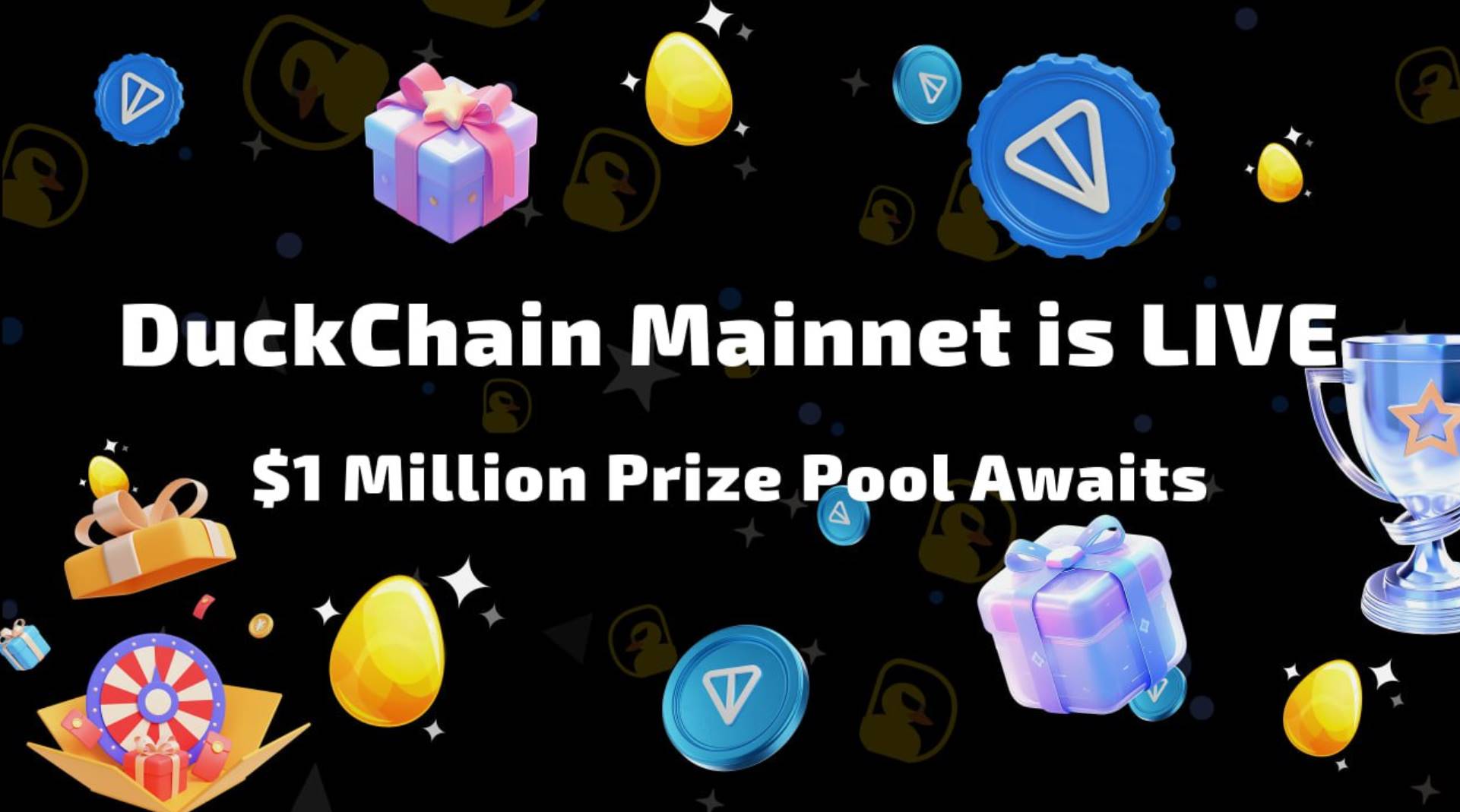
TechFlow: Finally, developers are the core figures in ecosystem building. With the official launch of the mainnet, it is a time of great construction for the ecosystem. What types of projects are more likely to gain DuckChain's favor? Additionally, what support can participants in DuckChain's construction expect?
Ducking:
DuckChain will prioritize supporting applications with the potential to break into new markets, truly bringing Web2 users into Web3. Specific types include, but are not limited to, Meme, GameFi, SocialFi, and innovative DeFi projects.
We hope project teams can fully unleash their creativity to provide users with unique and easy-to-participate experiences.
Developers participating in the construction will receive comprehensive support, including ecosystem rewards, project consulting, community promotion covering over 10 million users, and funding support from top investment institutions.
免责声明:本文章仅代表作者个人观点,不代表本平台的立场和观点。本文章仅供信息分享,不构成对任何人的任何投资建议。用户与作者之间的任何争议,与本平台无关。如网页中刊载的文章或图片涉及侵权,请提供相关的权利证明和身份证明发送邮件到support@aicoin.com,本平台相关工作人员将会进行核查。




